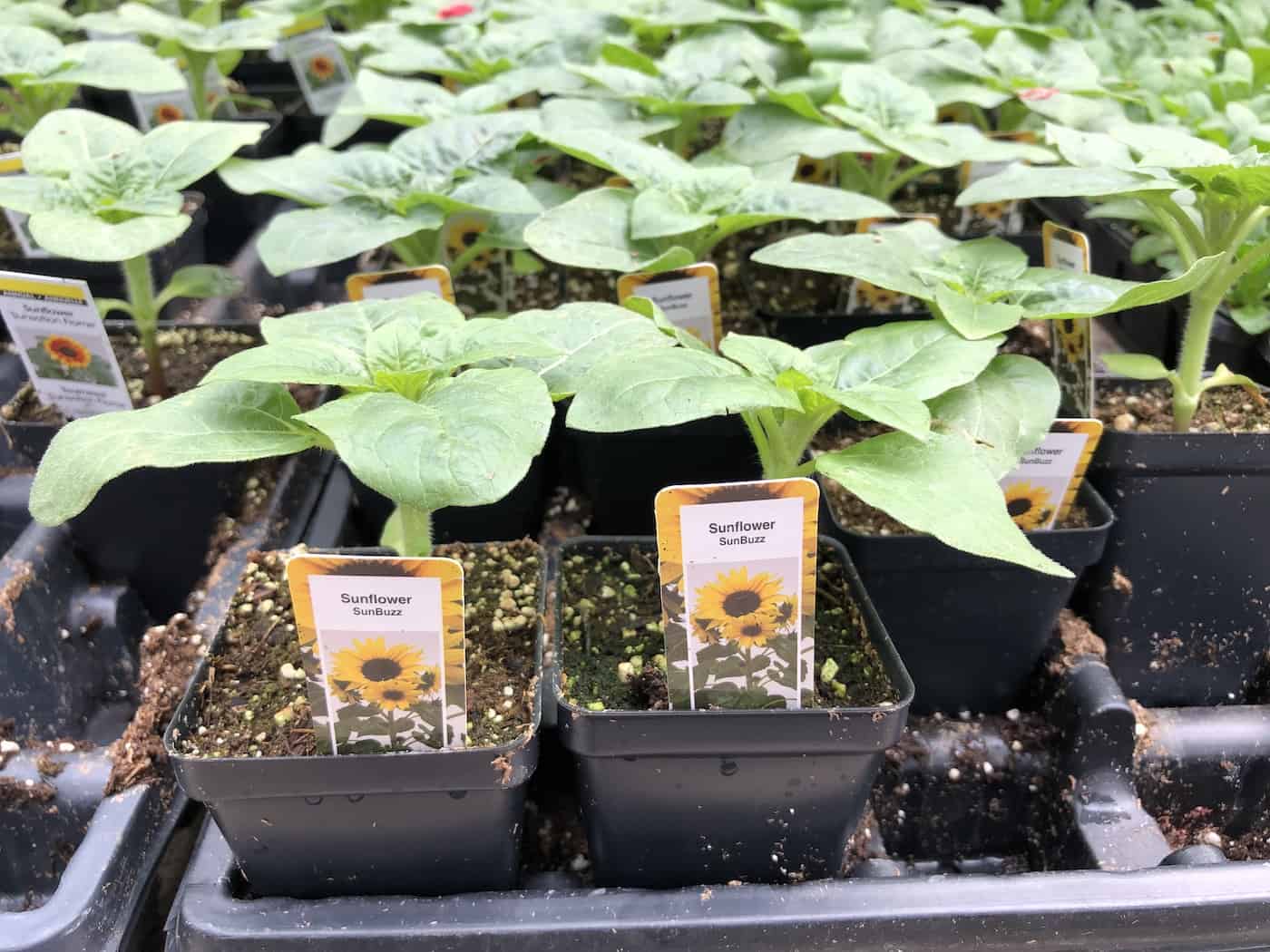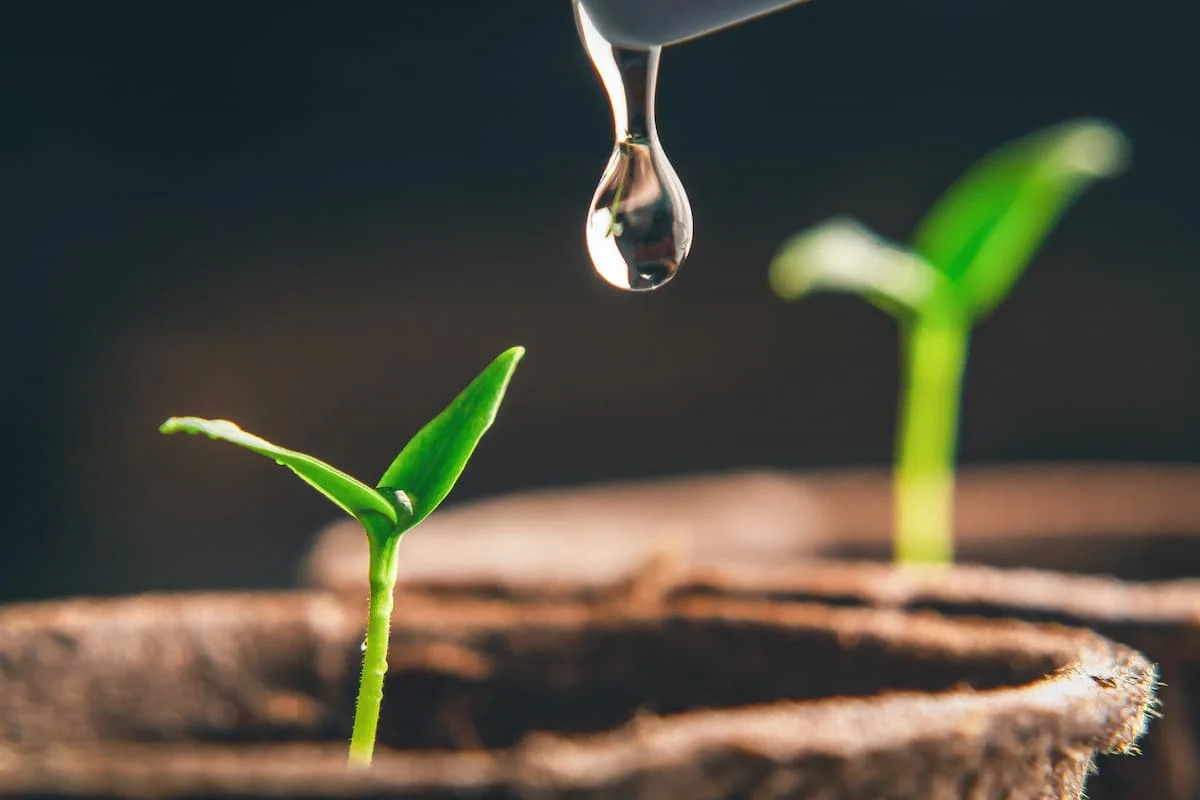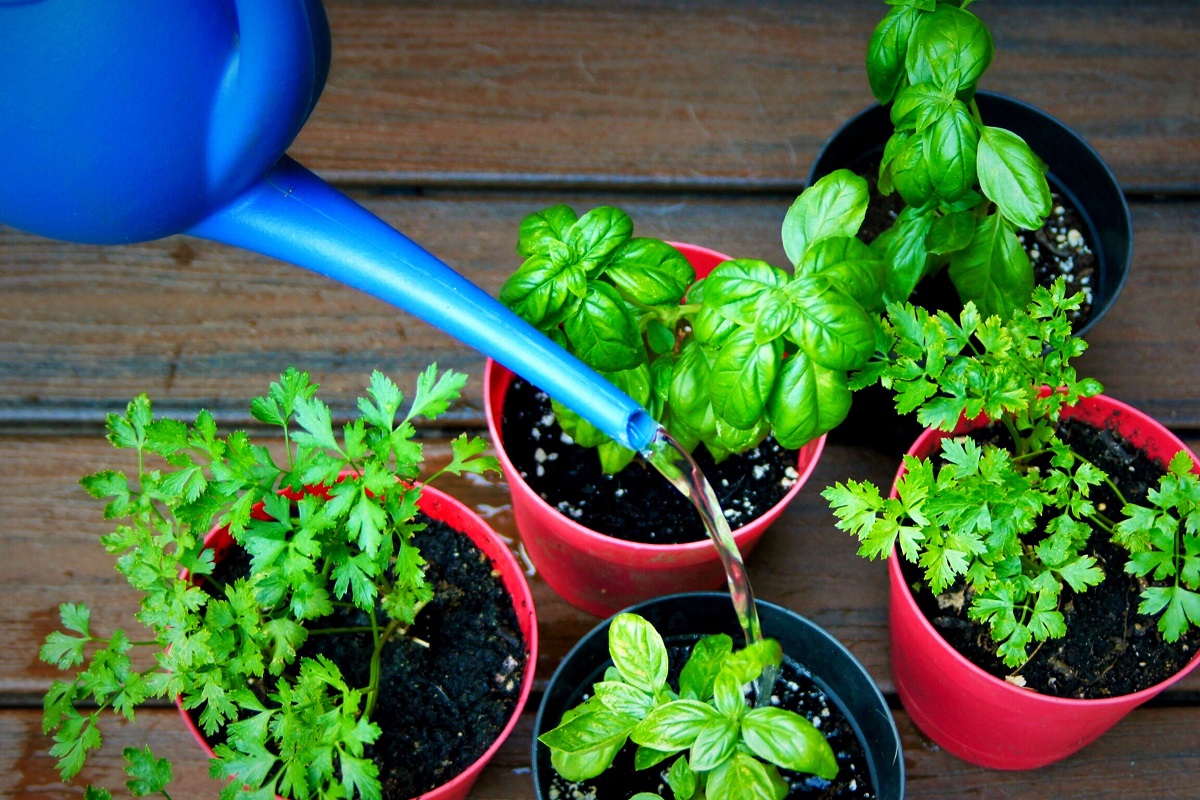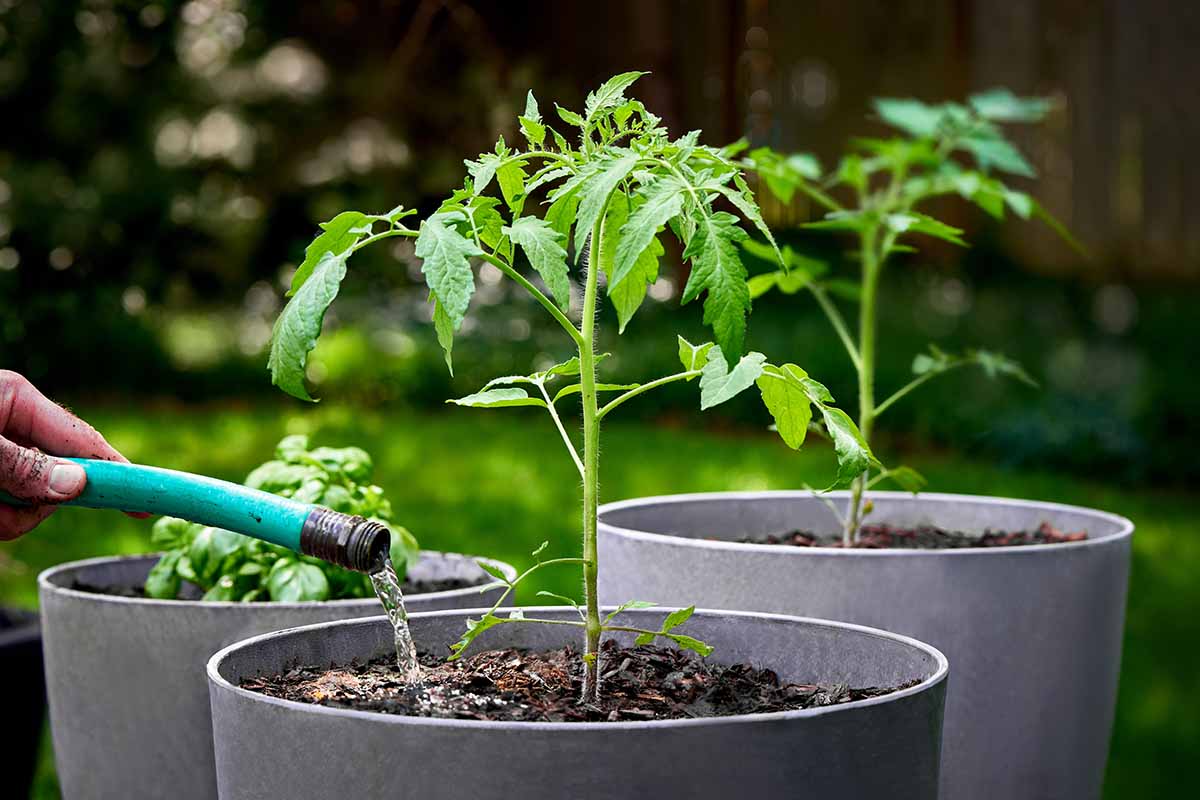Home>Gardening Tips and Tricks>Eco-Friendly Gardening>How Often Do You Change The Water In Aeroponics


Eco-Friendly Gardening
How Often Do You Change The Water In Aeroponics
Modified: January 22, 2024
Discover the eco-friendly gardening technique of aeroponics and learn how often you should change the water in this water-saving and sustainable growing system.
(Many of the links in this article redirect to a specific reviewed product. Your purchase of these products through affiliate links helps to generate commission for Chicagolandgardening.com, at no extra cost. Learn more)
Table of Contents
- Introduction
- Understanding Aeroponics
- Importance of Water in Aeroponics Systems
- Factors Affecting Water Change Frequency
- Recommended Water Change Frequency for Aeroponics
- Signs Indicating the Need for Water Change
- Steps to Properly Change Water in Aeroponics Systems
- Maintenance Tips for Aeroponic Water Reservoirs
- Conclusion
Introduction
Welcome to the world of eco-friendly gardening! In an era where sustainability and environmental consciousness are becoming increasingly important, more and more people are turning to eco-friendly gardening practices. One such practice is aeroponics, a highly efficient, water-saving technique that allows plants to grow without the use of soil. In aeroponic systems, plants are suspended in a mist-like environment where their roots are periodically sprayed with nutrient-rich water.
A key aspect of successfully implementing aeroponics is proper water management. Water is not only the medium in which nutrients are delivered to the plants, but it also plays a crucial role in maintaining the health and vitality of the entire system. Understanding how often to change the water in your aeroponic system is essential for maximizing plant growth and ensuring the optimal functioning of the system.
In this article, we will delve into the world of aeroponic gardening and explore the factors that dictate the frequency of water changes in your system. We will also discuss the signs that indicate the need for a water change and provide you with step-by-step instructions on how to properly change the water in your aeroponic system. Additionally, we will share some maintenance tips to keep your aeroponic water reservoirs in top shape.
Whether you are a seasoned gardener looking to adopt an eco-friendly approach or a beginner searching for innovative gardening techniques, this article will serve as your comprehensive guide to understanding and managing the water in your aeroponic system.
Understanding Aeroponics
Aeroponics is a soilless gardening method that allows plants to grow in an air or mist environment, with their roots suspended in the air. Unlike traditional soil-based gardening, aeroponics relies on the delivery of nutrients and water directly to the plant roots through a fine mist or spray. This innovative gardening technique offers numerous advantages, including faster growth rates, higher yields, and greater water efficiency.
The aeroponic system typically consists of a water reservoir, a pump, and misting nozzles. The water in the reservoir is enriched with essential nutrients to support plant growth and health. The pump is responsible for pressurizing the water and delivering it to the misting nozzles, which disperse a fine mist of nutrient-rich water directly onto the plant roots. The plants are suspended in the system, allowing their roots to access the oxygen-rich environment.
One of the primary benefits of aeroponics is its ability to maximize the absorption of nutrients and water by the plants. With the roots exposed to the air, they can absorb oxygen more efficiently and absorb nutrients and water at a faster rate than in traditional cultivation methods. This increased nutrient and water uptake leads to accelerated growth and larger yields in a shorter span of time.
In addition to its efficiency, aeroponics also offers environmental benefits. The closed-loop system of aeroponics reduces water usage significantly compared to soil-based gardening methods. Since the water is continuously recirculated within the system, there is minimal wastage. Moreover, aeroponic systems can be set up indoors or in small spaces, making them ideal for urban gardening or areas with limited access to arable land.
Overall, aeroponics is a sustainable and eco-friendly gardening technique that offers numerous advantages over traditional soil cultivation. By understanding the principles behind aeroponics, you can harness its potential to grow healthy and abundant plants while reducing resource consumption.
Importance of Water in Aeroponics Systems
Water is a fundamental component of aeroponic systems and plays a critical role in the success of your gardening endeavors. It serves multiple purposes, ranging from delivering essential nutrients to maintaining the optimal moisture levels for the plants. Understanding the importance of water in aeroponics systems is vital for maintaining healthy plant growth and maximizing the efficiency of the system.
One of the primary functions of water in aeroponics is nutrient delivery. In traditional soil-based gardening, plants derive nutrients from the soil. However, in aeroponics, the plants rely on nutrient-rich water to obtain the essential elements required for their growth. The water in the system is enriched with a carefully balanced blend of macro and micronutrients that are essential for plant development. The roots of the plants absorb these nutrients from the mist or spray, allowing for rapid and targeted nutrient absorption.
Furthermore, water in aeroponics serves as a carrier for oxygen. Roots need oxygen to thrive, and in aeroponic systems, the absence of soil allows for increased oxygen availability. The water acts as a medium that delivers oxygen to the roots, ensuring their proper aeration. This oxygenation enhances the plant’s ability to absorb water and nutrients, promoting robust root development and overall plant health.
Water also helps maintain the optimal moisture levels in the aeroponic system. The fine mist or spray that the roots are exposed to provides moisture that is readily available for absorption. This consistent moisture supply is crucial for the plants’ survival and growth, as it prevents dehydration and ensures efficient nutrient uptake.
In addition to nutrient delivery and moisture regulation, water in aeroponics systems aids in temperature moderation. The water in the system can act as a heat sink, absorbing excess heat and maintaining a stable environment for plant growth. This temperature regulation is particularly important in hot climates or during heatwaves when external temperatures can adversely affect plant health.
Overall, water is a lifeline in aeroponic systems, fulfilling essential functions such as nutrient delivery, oxygenation, moisture regulation, and temperature moderation. By recognizing the significance of water in aeroponics gardening, you can optimize the system’s performance and cultivate thriving, healthy plants.
Factors Affecting Water Change Frequency
Several factors influence the frequency at which you should change the water in your aeroponic system. Understanding these factors will help you maintain optimal water quality and plant health. Let’s explore the key factors that affect water change frequency in aeroponics systems.
- Plant Nutrient Uptake: The rate at which plants absorb nutrients from the water can vary depending on their growth stage and nutrient requirements. Young plants or those in the vegetative stage may have lower nutrient demands compared to mature plants or those in the flowering stage. Monitoring the nutrient levels and adjusting the water change frequency accordingly can ensure that plants receive the appropriate amount of nutrients.
- Water Quality: The quality of the water used in your aeroponic system can impact the frequency of water changes. If your water source contains high levels of contaminants, such as chlorine or heavy metals, it may be necessary to change the water more frequently to maintain a healthy growing environment for your plants. Alternatively, using filtered or purified water can reduce the need for frequent water changes.
- pH Level: The pH level of the water affects nutrient availability and uptake by the plants. If the pH drifts outside the optimal range for your plants, it can hinder nutrient absorption and affect plant health. Regularly monitoring the pH level and adjusting it as needed can help maintain a stable growing environment and potentially reduce the frequency of water changes.
- Temperature: Warmer temperatures can promote the growth of bacteria or algae in the water reservoir. If the temperature of your aeroponic system is consistently high, you may need to change the water more frequently to prevent the buildup of harmful microorganisms. Additionally, higher temperatures can increase plant transpiration, leading to faster water evaporation and potentially requiring more frequent water changes.
- System Size and Plant Density: The size of your aeroponic system and the number of plants you’re growing can affect water change frequency. Larger systems typically require more water and nutrients to support the plants, while densely planted systems may deplete the nutrient concentration more quickly. Monitoring the water quality and nutrient levels regularly can help determine when water changes are necessary for optimal plant growth.
By considering these factors and regularly monitoring the water quality and nutrient levels in your aeroponic system, you can determine the appropriate frequency of water changes. Adapting the water change schedule based on the specific needs of your plants and system conditions will help you maintain a healthy and thriving garden.
Recommended Water Change Frequency for Aeroponics
Determining the ideal water change frequency for your aeroponic system is crucial for maintaining optimal plant health and system performance. While the specific frequency may vary based on factors such as plant type, system size, and environmental conditions, here are some general guidelines to help you establish a recommended water change schedule:
- Every 1-2 weeks: As a starting point, changing the water in your aeroponic system every 1-2 weeks is a good rule of thumb. This frequency allows for sufficient nutrient replenishment and helps prevent the buildup of algae or harmful bacteria that can negatively impact plant health.
- Monitor nutrient levels: Regularly test the nutrient levels in your water to ensure that they remain within the optimal range for your plants. If the nutrient concentration becomes too low, it may be necessary to increase the frequency of water changes to provide adequate nutrition. Conversely, if the levels are consistently high, you may be able to extend the time between water changes.
- Observe plant growth and health: Pay attention to the growth and overall health of your plants. If you notice signs of nutrient deficiencies, such as yellowing leaves or stunted growth, it may indicate that the water needs to be changed more frequently to ensure optimal nutrient availability.
- Monitor water quality: Regularly check the pH level and temperature of the water in your aeroponic system. If the pH becomes too acidic or alkaline, it can hinder nutrient uptake, and a water change may be necessary. Additionally, if the water temperature consistently remains high, it can promote the growth of harmful microorganisms and warrant more frequent water changes.
- Consider environmental conditions: Depending on your climate and the specific conditions of your growing environment, you may need to adjust the water change frequency. For example, in hotter climates or during periods of high heat, plants may transpire more rapidly, leading to faster water evaporation and the need for more frequent water changes.
It’s important to note that these recommendations serve as a starting point, and you should always adapt and fine-tune the water change frequency based on the specific needs of your plants and system. Regular monitoring of water quality, nutrient levels, and plant health will allow you to make informed decisions and ensure the continuous well-being of your aeroponic garden.
Signs Indicating the Need for Water Change
Monitoring the condition of the water in your aeroponic system is crucial for maintaining optimal plant health. While having a recommended water change schedule is important, it is equally essential to be aware of the signs that indicate the need for a water change. Here are some common signs to look out for:
- Unpleasant odor: If you detect a foul or unpleasant odor emanating from your aeroponic system, it may indicate the presence of harmful bacteria or algae. This can occur when the water has been stagnant for an extended period or when nutrient levels are imbalanced. A water change can help eliminate the source of the odor and maintain a healthy growing environment.
- Cloudy water: Water in a healthy aeroponic system should be clear and transparent. If you notice that the water has become cloudy or murky, it could be a sign of nutrient buildup, suspended particles, or the presence of microorganisms. Changing the water will help restore clarity and ensure that oxygen and nutrients can be properly absorbed by the plants.
- Algae growth: If you see green or brownish growth on the walls of your water reservoir, it is likely algae. Algae can proliferate in the presence of sunlight, excess nutrients, and warm temperatures. While some algae growth is normal, excessive growth can compete with plants for nutrients and impede their growth. A water change, along with addressing any underlying issues, can help control algae growth.
- Declining plant health: When plants show signs of stunted growth, yellowing leaves, or wilting despite proper nutrient delivery, it may be an indication of water quality issues. Nutrient imbalances or the presence of harmful microorganisms can negatively impact plant health. Changing the water will help refresh the nutrient levels and eliminate potential sources of stress for the plants.
- Excessive mineral buildup: Over time, minerals can accumulate in the water reservoir, especially if you are using tap water with high mineral content. The presence of white, crusty deposits or scale on the surfaces of your system or the roots of your plants can indicate mineral buildup. This can hinder nutrient absorption and impact plant health. A water change, along with regular cleaning and descaling, can help mitigate mineral buildup.
Keep in mind that these signs are not definitive proof that a water change is necessary, but they serve as indicators that require attention and investigation. Regular monitoring of the water quality and overall health of your plants will help you identify and address any issues promptly, ensuring a thriving aeroponic garden.
Steps to Properly Change Water in Aeroponics Systems
Changing the water in your aeroponic system is a vital maintenance task to ensure optimal nutrient delivery and plant health. Here are the steps to properly change the water in your aeroponics system:
- Prepare new water: Start by preparing the new water that will replace the existing water in your system. Use filtered or purified water if possible to reduce the risk of contaminants affecting your plants. Adjust the pH and nutrient levels of the new water to match the requirements of your plants.
- Drain the reservoir: Begin by draining the existing water from the reservoir. You can use a pump or siphoning system to remove the water. Collect the drained water for appropriate disposal or reuse in other gardening tasks, if suitable.
- Clean the reservoir: Once the water is drained, clean the reservoir thoroughly to remove any residue, algae, or mineral buildup. Use a mild bleach solution or a non-toxic cleaning agent recommended for hydroponic systems. Rinse the reservoir thoroughly with clean water to ensure all cleaning agents are removed.
- Refill the reservoir: After cleaning, refill the reservoir with the freshly prepared water. Slowly fill the reservoir to avoid disturbing the plants or creating excessive splashing.
- Restart the system: Restart the system by turning on the pump to circulate the new water. Ensure that the misting nozzles are functioning properly and effectively misting the plant roots. Monitor the system for any leaks, clogs, or irregularities while it operates.
- Monitor plant response: After changing the water, closely monitor the plants for any signs of stress or nutrient deficiency. Adjust the nutrient levels or pH as needed to ensure the optimal growing conditions for your plants.
- Maintain regular water change schedule: Establish a regular water change schedule based on the specific needs of your plants and system. Regularly monitor the water quality and nutrient levels to determine the appropriate frequency of water changes to maintain optimal plant growth and system performance.
Remember to follow the manufacturer’s instructions for your specific aeroponic system, as different systems may have slight variations in the water change process. Regular maintenance and proper water management will help ensure a healthy and thriving aeroponic garden.
Maintenance Tips for Aeroponic Water Reservoirs
Proper maintenance of your aeroponic water reservoir is essential for the long-term success of your gardening endeavors. Here are some maintenance tips to help you keep your aeroponic system running smoothly:
- Regularly monitor water quality: Regularly test the pH, nutrient levels, and temperature of the water in your reservoir. This will help you ensure that the water quality is optimal for your plants. Adjust the pH and nutrient levels as needed to maintain a stable and balanced growing environment.
- Prevent algae growth: Algae can thrive in warm and nutrient-rich environments. To prevent excessive algae growth, keep the reservoir out of direct sunlight and monitor nutrient levels to avoid an excess. Additionally, incorporating light-blocking materials or using reflective covers can help minimize light exposure to the water.
- Clean and descale regularly: Regularly clean the inside of your water reservoir to prevent the buildup of algae, mineral deposits, and other contaminants. Use a mild bleach solution or appropriate cleaning agents to sanitize the reservoir. If mineral deposits accumulate over time, use a descaling agent or a mixture of vinegar and water to remove them.
- Check and clean misting nozzles: Over time, mineral deposits or debris can clog the misting nozzles, affecting the efficiency of nutrient delivery. Inspect the nozzles regularly and clean them with a fine brush or needle to remove any buildup or obstructions. This will ensure that the mist is evenly distributed to the plant roots.
- Monitor and adjust water levels: Monitor the water level in the reservoir regularly. Ensure that it is at an appropriate level to provide sufficient coverage for the plant roots. If the water level drops too low, it can affect the misting process and nutrient delivery. Refill the reservoir with fresh water as needed to maintain the desired level.
- Inspect and maintain the pump: The pump is a critical component of your aeroponic system and should be inspected regularly. Check for any signs of damage, leaks, or irregularities. Clean the pump intake to remove any debris that may impact its performance. Lubricate moving parts if necessary, following the manufacturer’s instructions.
- Monitor plant health: Pay close attention to the overall health and growth of your plants. Monitor for any signs of nutrient deficiencies, pests, or diseases. Regularly trim any dead or diseased plant material to prevent the spread of pathogens and promote healthy growth.
By following these maintenance tips and establishing a routine for monitoring and upkeep, you can ensure that your aeroponic water reservoir stays clean, nutrient-rich, and conducive to optimal plant growth. Regular maintenance will help prevent issues and promote a healthy and thriving aeroponic garden.
Conclusion
Eco-friendly gardening practices, such as aeroponics, offer a sustainable and efficient way to grow plants without the use of soil. Proper water management is crucial for the success of aeroponic systems, as it plays a vital role in delivering nutrients, maintaining moisture levels, and promoting overall plant health. By understanding the factors that influence water change frequency, recognizing signs that indicate the need for a water change, and following the proper steps to change the water, you can ensure optimal growth and productivity in your aeroponic garden.
Regularly monitoring the water quality, pH levels, and nutrient concentrations will enable you to maintain an ideal growing environment for your plants. By taking proactive measures to prevent algae growth, clean the reservoir, and maintain the misting nozzles and pump, you can keep your aeroponic system running at its best. As you gain experience and develop a routine, you can adjust the water change frequency according to the specific needs of your plants, system size, and environmental conditions.
Remember, proper maintenance and care are essential for the long-term success of your aeroponic system. Regular monitoring, cleaning, and adjusting will ensure that your plants receive the necessary nutrients, oxygen, and moisture to flourish. With a little attention to detail and a commitment to eco-friendly gardening practices, you can enjoy the benefits of aeroponics and grow healthy, abundant plants while minimizing resource consumption.
So, embrace the world of aeroponic gardening, take the necessary steps to manage your water effectively, and witness the incredible results that this sustainable gardening technique has to offer.









